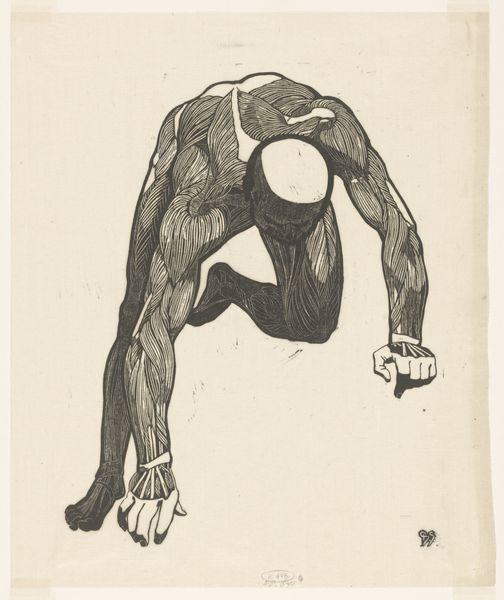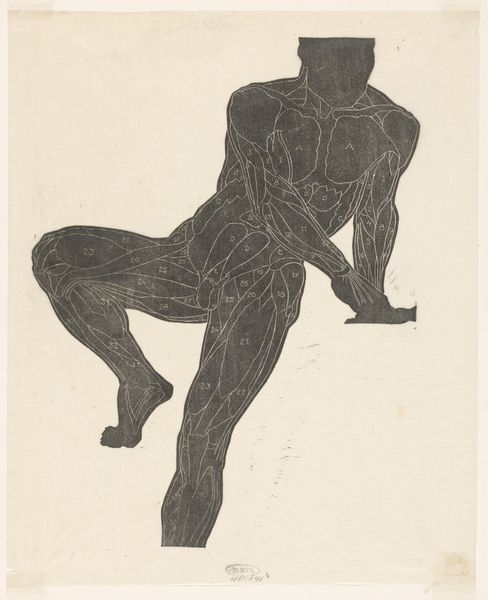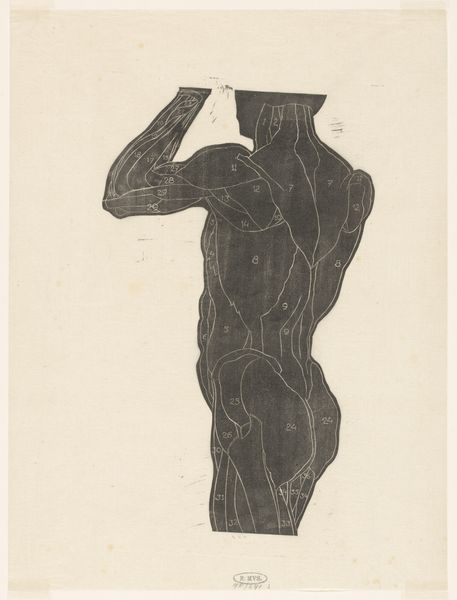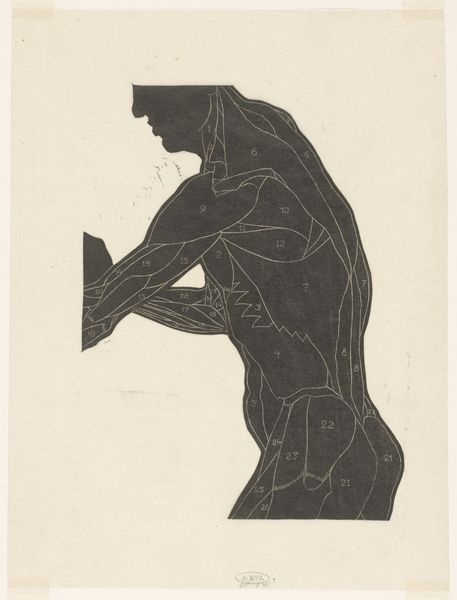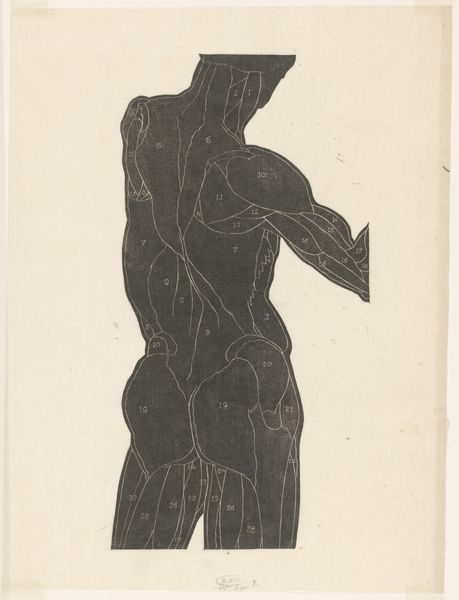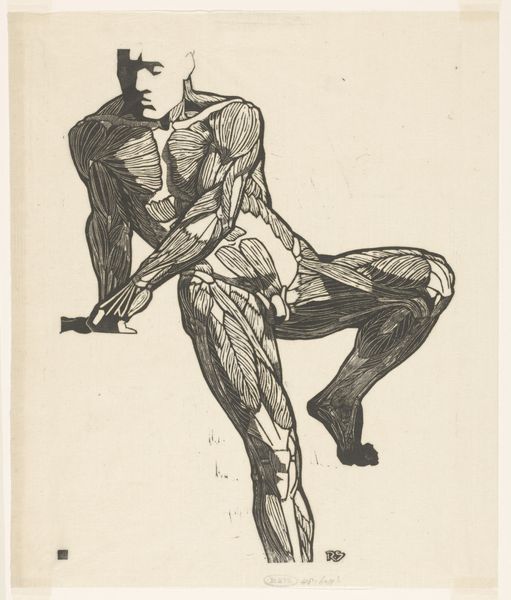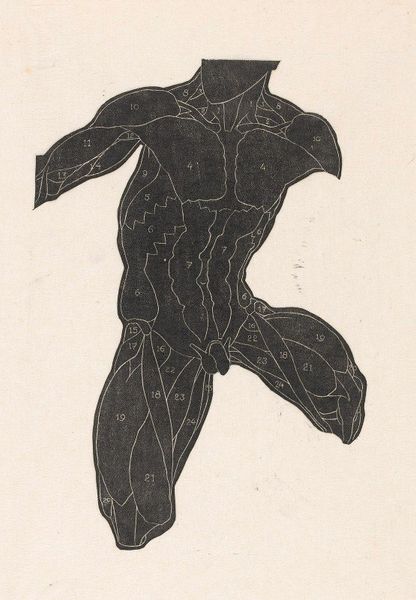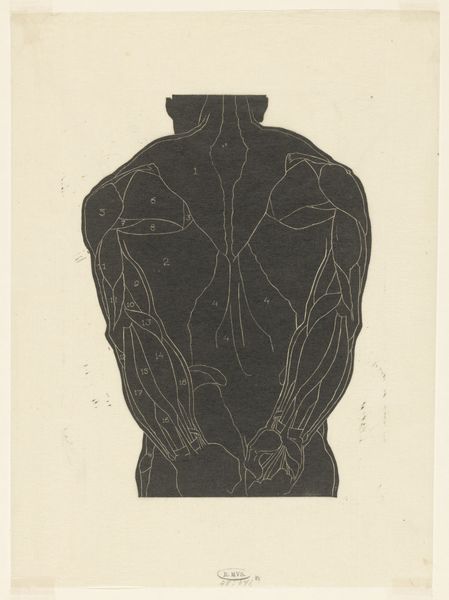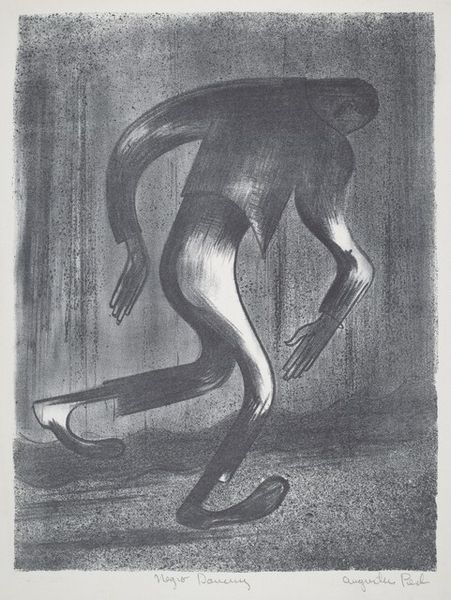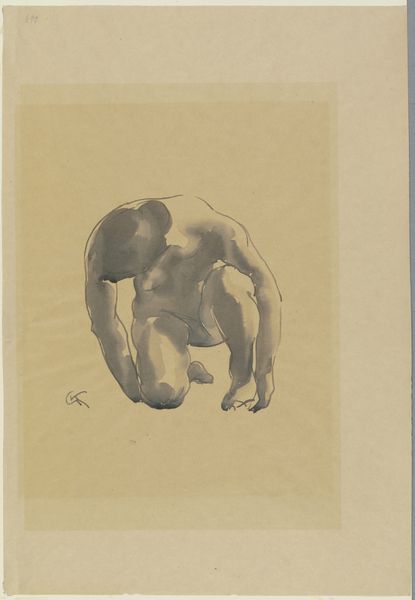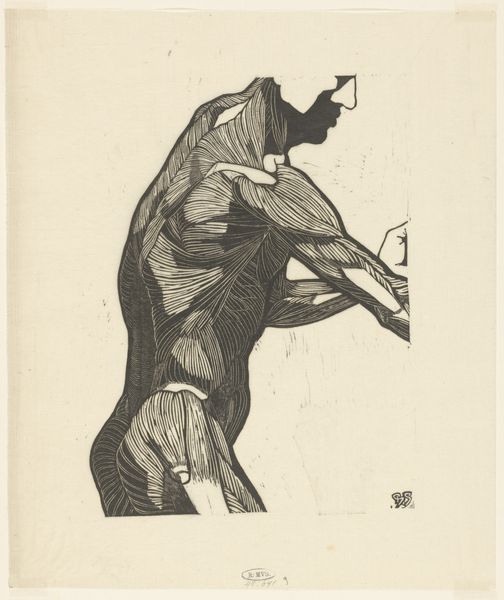
Anatomische studie van de hals-, arm- en beenspieren van een man in silhouet 1906 - 1945
0:00
0:00
reijerstolk
Rijksmuseum
drawing, print, ink, engraving
#
portrait
#
drawing
# print
#
figuration
#
form
#
ink
#
line
#
academic-art
#
engraving
#
modernism
Dimensions: height 288 mm, width 270 mm
Copyright: Rijks Museum: Open Domain
Curator: This compelling work, currently held at the Rijksmuseum, is titled "Anatomische studie van de hals-, arm- en beenspieren van een man in silhouet," or "Anatomical study of the neck, arm and leg muscles of a man in silhouette." It’s difficult to pin down an exact creation date, but it’s believed to be from somewhere between 1906 and 1945. Editor: It's striking! The figure is crouched, almost animalistic, rendered entirely in solid black except for the numbered lines tracing the muscles. It feels both scientific and deeply expressive. Curator: Precisely. Look closely at how the engraver used ink and the printmaking process. The silhouette eliminates any sense of individuality. We are presented instead with a body reduced to its pure, functional form – muscle and sinew defined for study. What social and artistic anxieties were swirling that would manifest in this particular way of representing a body? Editor: The numbering certainly draws attention to the methods used. It exposes the artifice involved in dissecting and representing the human form. This isn't about idealized beauty, but about labor – both the labor of the muscles depicted, and the labor of the artist in meticulously engraving each line. And of the printers reproducing it. The question would be about where this image came from, why it was created in multiples...and where those images might have circulated, how it might have been used. Curator: Consider the social context during this time period. Academic art still held significant sway, yet modernism was emerging. There was an emphasis on rationalizing the human body but also in exploring new styles of rendering. What identities are formed and excluded? What kinds of bodies and power are considered? Editor: And is it about a move towards mass-produced medical knowledge... Was this intended to make that process of dissection and investigation somehow democratic, offering broader populations insights into its processes and materials. What of its status as an object? Is it to hang on the wall, or hide inside books for study. Curator: This silhouette serves as a stark reminder of how power, knowledge, and the physical form have always been deeply intertwined. This piece invites a reflection on the cultural assumptions embedded in medical observation. Editor: Exactly. Seeing it, touching it as an object produced materially raises critical questions about the consumption and understanding of anatomy within broader society.
Comments
No comments
Be the first to comment and join the conversation on the ultimate creative platform.
